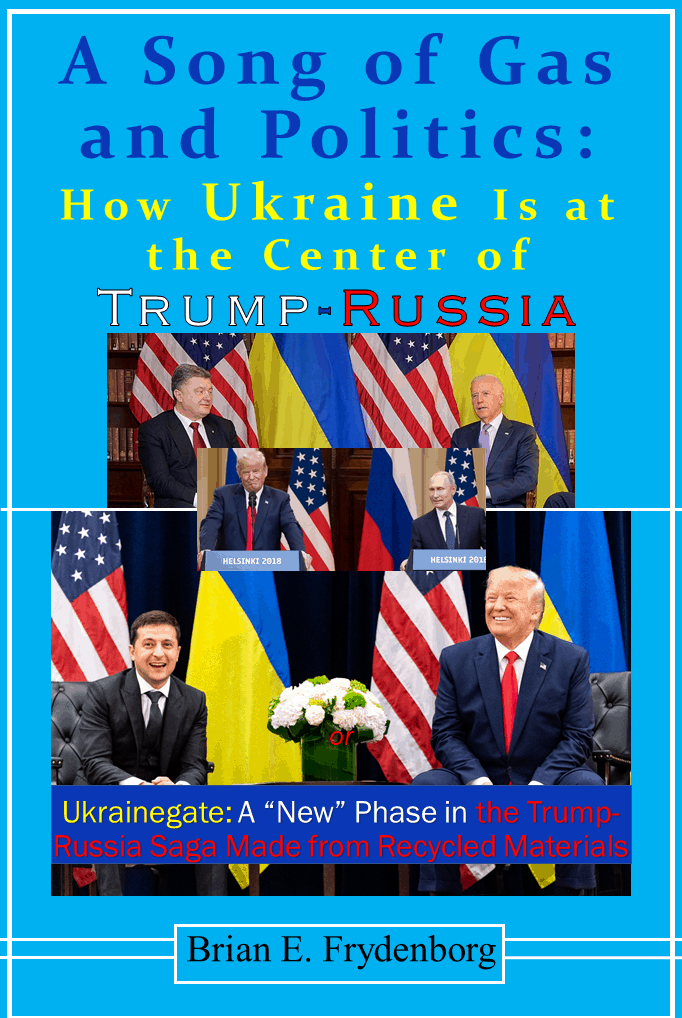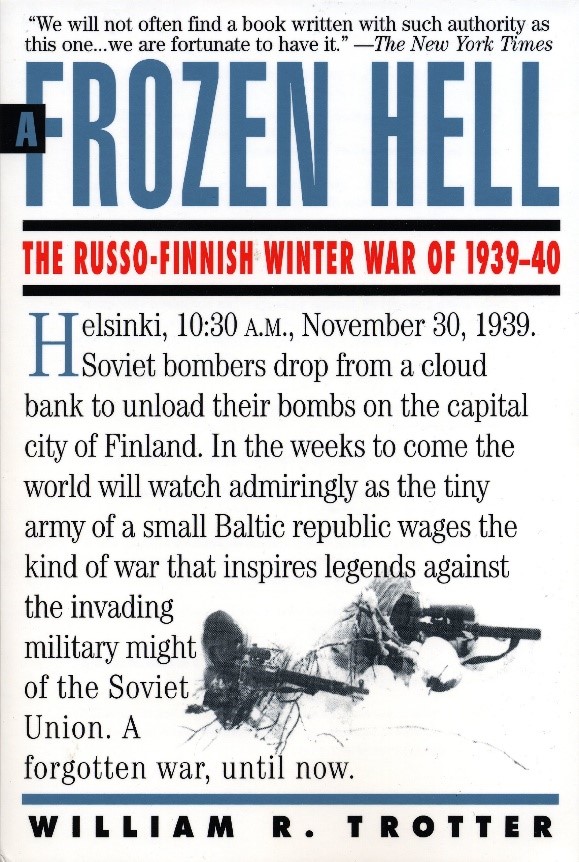Before Stalin launched his war against Finland in 1939, Soviet war planners based their planning on the self-serving, inaccurate fiction that Finland was rife with fascists. This delusion would cost them dearly in the war, and in 2022 Putin and his folks repeated this mistake with Ukraine to similarly disastrous results—still unfolding—for the whole world to see.
(Russian/Русский перевод) By Brian E. Frydenborg, June 2, 2022 (Twitter @bfry1981; LinkedIn, Facebook); this is one of a series of articles excerpted and/or adapted from Brian’s May 23 Small Wars Journal article, Bungling the Prewar and First Moves in Finland 1939 and Ukraine 2022: A Comedy of Errors for Stalin’s Soviet Union and Putin’s Russia, Respectively, his deep-dive analysis on the parallels between the 1939-1940 Soviet-Finnish Winter War that was inspired by his reading the beginning of one of the definitive English accounts of this war—William Trotter’s A Frozen Hell: The Russo-Finnish Winter War of 1939-40 (Algonquin Books of Chapel Hill, 1991, 283 pages; for sourcing, assume all uncited information comes from Trotter’s book but quotes will be given a page number or numbers in parentheses and anything from another source an external a link; in some instances, when I have written in detail about something, I may link to my own work, in which you can find many external sources backing up what has been stated). This conflict is especially timely as Finland seeks to join NATO in light of Russia’s recent imperialist aggression.
Other articles excerpted and/or adapted from the May 23 Small Wars Journal article:
- May 23: A Terrifying Comparison Between Putin and Stalin
- May 25: A Brief History of Russian and Soviet Genocides, Mass Deportations, and Other Atrocities in Ukraine
- May 31: “Banderites”: What Russia Really Means When It Calls Ukraine Nazi and Fascist
- June 5: Moscow’s 1939 Finland Hubris Repeats Itself in Ukraine in 2022
- June 7: A Flurry of Telling Parallels Between the 1939-1940 Soviet-Finnish Winter War and Russia’s 2022 Ukraine War
SILVER SPRING—Distorting the Soviets’ pre-planning for the Soviet-Finnish Winter War, among other factors I explain elsewhere, was the issue of a fringe fascist movement in Finland, known as the Lapuans, that tried to have a coup in 1932 but never was competent or numerous enough to pose a real threat and would fragment into even smaller fringe groups, some of which agitated for the part of Karelia on the Soviet side of the border that still was home to ethnic Finns. One of these groups even created maps of a “Greater Finland” including Soviet territory. Writes Trotter:
One can easily imagine the impact such documents had when they fell, as several specimens did, into the hands of Stalin’s intelligence operatives.
[Soviet Premier Joseph] Stalin was unrealistically influenced by the headline-grabbing antics of the Lapuans, the grotesque fantasies of the Karelian irredentists, and the exaggerated reports of agents who were eager to tell the Kremlin what they thought the Kremlin wanted to hear. From remarks made during his later negotiations with the Finns, it seems clear that Stalin really did believe that the interior of Finland seethed with class antagonism and fascist plotters and that all of Finnish society was undercut by smouldering grudges left over from the civil war days. Ill feeling persisted, of course—the conflict had been too bloody for all the scars to have healed in just two decades—but Moscow’s estimate of its extent, importance, and potential for outside exploitation was wildly inaccurate. In fact, the old wounds were healing faster than even the Finns themselves realized; with the onset of a massive contemporary threat from the Soviet Union, those old enmities looked remote and historic. (9-10)
The outsized effect of these tiny, fringe groups, with almost no power base and even less political support, are instructive for both what would transpire in 1939-1940 between Finland and the USSR and what is happening now between Ukraine and Russia and the whole absurd “denazification” talk of Putin’s Kremlin, as will be explained.
Official Soviet publications and news services referred to the Finnish government and leaders as “the Fascists” and emphasized the supposedly oppressive conditions of the Finnish working class and their readiness to ally with the Soviet would-be “liberators.”
Soviet official publications and news also trumpeted that “’the Imperialists” (i.e., the West) were already in motion to use Finland as a base for an invasion of the Soviet Union. Writes Trotter:
This was, and to a certain extent still is, the official justification given to the Soviet Public for why the war was fought. It permitted the Kremlin to rationalize the apparent lunacy of a nation of 3.5 million souls attempting to invade a nation of 171 million. These claims also laid the groundwork for later explanations of the failed offensives and staggering casualties suffered by the Red Army. These could be explained away as being the result of Imperialist aid to the treacherous Finns. (19)
Russia’s playbook today clearly draws from the same themes the Soviets used in the Winter War, as nearly 83 years later, the same hubris, the same assumptions of their own popularity in a foreign country, the same lack of due diligence and willingness to subscribe to self-serving narratives—falling for their own propaganda—infested the decision-makers in Moscow planning another war against a far-weaker, far-smaller neighbor without any formal allies, only this time in Putin’s Kremlin, rather than Stalin’s.
Putin and his folks seemed to have really believed that many Ukrainians would not only sympathize with Russia, but would actually join Russia and collaborate. For Putin, Ukraine is Russia and the Russian speakers in Ukraine are not Ukrainians, they are Russians who have tragically been wrested from the Motherland. Even ethnic Ukrainians speaking Ukrainian as their primary language are not really Ukrainians to him, just a different kind of Russian. At Russian gunpoint, these people would feel very differently than he did; in the past, those ethnic Russians especially had voted for the pro-Russian faction in Ukrainian politics, but Putin’s military aggression against Ukraine since 2014 has turned vehemently against both him and Russia the very Ukrainians who used to view both favorably, as I have noted before.
For Finland’s Lapuans, today in Ukraine we can substitute the much-blown-out-of-proportion, glibly-over-simplified Russian hyperbole on the (somewhat formerly far-right) Azov Battalion of Ukraine; anecdotal evidence suggests Russian soldiers are obsessed with ferreting out the unit’s fighters (real or imagined) and supporters as well as other “Nazis” (amounting to “denazificaton”).
As I have noted at great length before, Putin’s brands of revanchist ethnonationalist colonialism and imperialism are utterly banal and thoroughly unoriginal, always playing on old themes from the past. On May 8, 2022, just before Russia’s grand celebration of its Victory Day commemorating the defeat of Hitler’s Nazi Germany, Putin accordingly remarked: “Today, our soldiers, as their ancestors, are fighting side by side to liberate their native land from the Nazi filth with the confidence that, as in 1945, victory will be ours,” that, “today, it is our common duty to prevent the rebirth of Nazism.” On Victory Day itself, Putin devoted much of his speech in the Kremlin’s Red Square to similar themes, calling the opposing leadership in Kyiv “neo-Nazis and Banderites” (I have gone into detail on the history, context, and importance of that very specific latter term, on Stepan Bandera and his nationalist movement, in my last excerpted article as well as the original deep-dive from which both these pieces are excerpted).

Putin then went on to portray the current fighting as “unavoidable” because of the West’s support for Ukraine and supposed plans for aggression, condemning that support and NATO. He falsely blamed NATO and the West for instigating and orchestrating the current conflict, claiming his decision was “timely and the only correct decision. A decision by a sovereign, strong, independent country.” When the moment of silence for the fallen was called for, Putin invoked the memory of two groups: those who died fighting Hitler’s Nazi regime long ago and those whom he referred to as “neo-Nazis” in Ukraine today, explicitly linking both the Ukrainian government and current fighting to Nazi Germany and World War II, respectively, something the Kremlin has done ever since Putin’s favored stooge, the now disgraced Viktor Yanukovych, was overthrown from Ukraine’s Presidency in the 2013-2014 (Euro)Maidan Revolution. “Neo-Nazis,” “fascists,” and “Banderites” are terms that have been used to describe both post-Yanukovych presidential administrations in Kyiv, that of Petro Poroshenko and his successor, the now-legend-in-his-own-time Zelensky.
So it is that in the crudest of ways, Putin is trying to link the Great Patriotic War—Russia’s term for its fight in World War II against Nazi-led fascist armies—with the war against “Nazi” Ukraine today. And he and his crew made similar mistaken assumptions about fascists in the country he was about to attack in early 2022 that Stalin and his crew did in 1939 with Finland. Putin failed to learn from history, and the results are similarly humiliating for Moscow as they were in the beginning of the Soviet Finnish Winter War.
See all Brian’s Ukraine coverage here
© 2022 Brian E. Frydenborg all rights reserved, permission required for republication, attributed quotations welcome
Also see my eBook, A Song of Gas and Politics: How Ukraine Is at the Center of Trump-Russia, or, Ukrainegate: A “New” Phase in the Trump-Russia Saga Made from Recycled Materials, available for Amazon Kindle and Barnes & Noble Nook (preview here), and be sure to check out Brian’s new podcast!

If you appreciate Brian’s unique content, you can support him and his work by donating here
Feel free to share and repost this article on LinkedIn, Facebook, and Twitter. If you think your site or another would be a good place for this or would like to have Brian generate content for you, your site, or your organization, please do not hesitate to reach out to him!
